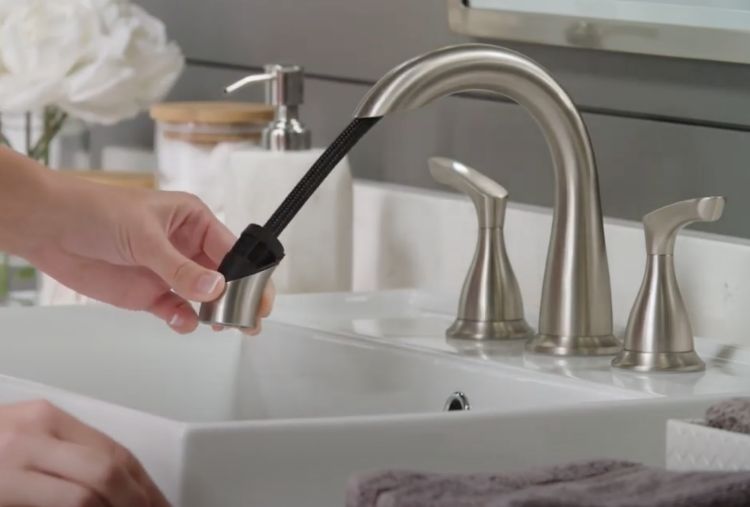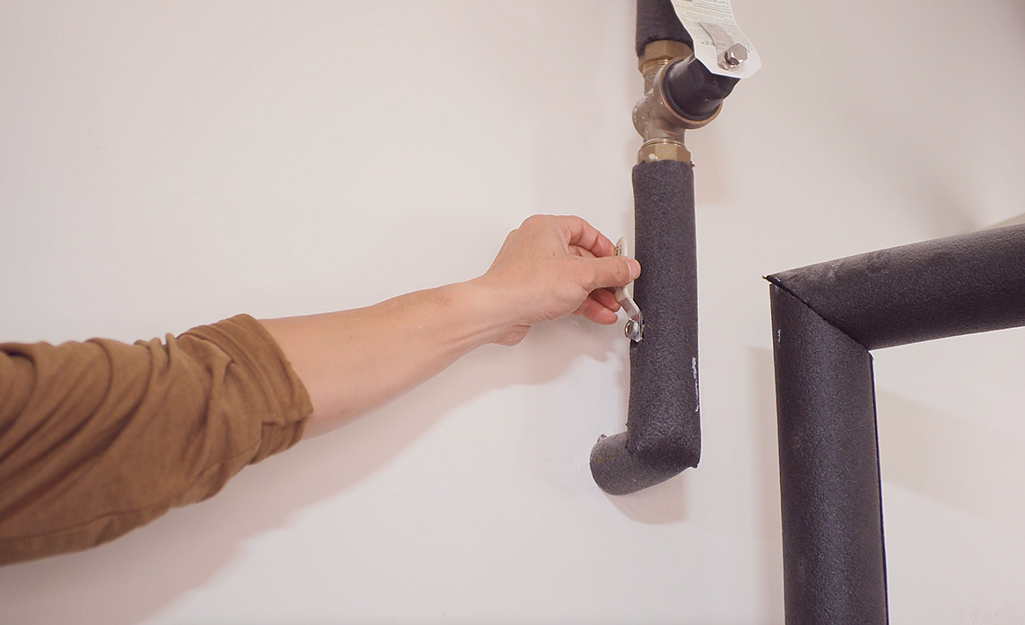Here on the next paragraphs you will find a good deal of brilliant tips involving Leaky Faucets: Why They Happen & What to Do About Them.

Leaking taps may feel like a small aggravation, yet their influence surpasses just the annoyance of the sound. From drainage to sustaining unneeded economic expenses and health and wellness threats, disregarding a leaking tap can bring about numerous consequences. In this article, we'll delve into why it's important to address this typical home problem quickly and efficiently.
Waste of Water
Environmental Impact
Dripping taps add dramatically to water waste. According to the Environmental Protection Agency (EPA), a single tap trickling at one drip per second can waste greater than 3,000 gallons of water each year. This not only strains water sources however also influences ecological communities and wild animals dependent on them.
Financial Prices
Enhanced Water Bills
Past the environmental influence, dripping taps can inflate water expenses significantly. The built up waste with time equates into greater utility expenses, which might have been avoided with prompt repair work.
Possible Property Damage
In addition, long term trickling can cause damage to fixtures and surface areas bordering the faucet. Water accumulation can create discoloration, rust, and also architectural problems if left unattended, resulting in added repair service costs.
Wellness Worries
Mold and Mold Growth
The consistent presence of dampness from a leaking tap creates an ideal setting for mold and mold growth. These fungi not just compromise indoor air top quality but likewise posture health threats, particularly for individuals with respiratory system problems or allergies.
Waterborne Illness
Stationary water in trickling taps can come to be a breeding ground for bacteria and other virus, raising the threat of waterborne diseases. Contaminants such as Legionella microorganisms flourish in stagnant water, possibly leading to significant diseases when consumed or inhaled.
DIY vs. Specialist Repair
Pros and Cons of DIY Repair Service
While some might attempt to repair a trickling tap themselves, DIY repair work include their very own collection of challenges. Without proper understanding and tools, do it yourself efforts can aggravate the problem or cause insufficient repair services, lengthening the trouble.
Advantages of Working With a Specialist Plumber
Working with a specialist plumber makes certain that the underlying root cause of the leaking faucet is resolved effectively. Plumbing technicians possess the expertise and devices to diagnose and fix tap concerns effectively, conserving time and minimizing the risk of more damage.
Step-by-Step Guide to Repairing a Dripping Tap
Devices Called for
Before trying to repair a leaking faucet, collect the essential tools, consisting of a flexible wrench, screwdrivers, replacement parts (such as washers or cartridges), and plumber's tape.
Common Tap Issues and Their Solutions
Recognize the kind of faucet and the specific concern creating the drip. Typical problems consist of damaged washers, rusty valve seats, or defective O-rings. Describe maker instructions or online tutorials for detailed guidance on fixings.
Safety nets
Regular Upkeep Tips
To prevent leaking faucets, perform regular upkeep such as cleaning up aerators, evaluating for leaks, and changing damaged parts without delay. Additionally, think about mounting water-saving devices or upgrading to a lot more effective components.
Importance of Prompt Repair Works
Resolving dripping faucets as soon as they're observed avoids additional water wastage and potential damages, eventually saving both water and cash in the future.
Effect On Building Value
Perception of Well-Maintained Building
Preserving a residential or commercial property in good condition, consisting of attending to upkeep problems like trickling faucets, improves its perceived worth and desirability amongst potential buyers or occupants.
Impact on Resale Value
Qualities with well-maintained plumbing fixtures, consisting of taps, command greater resale values in the real estate market. Attending to trickling faucets can add to a positive impression throughout home evaluations and negotiations.
Environmental Duty
Specific Payment to Conservation
Taking responsibility for fixing trickling faucets lines up with wider initiatives towards water preservation and environmental sustainability. Every person's actions collectively make a significant influence on maintaining valuable sources.
Sustainable Living Practices
By focusing on prompt repair work and taking on water-saving practices, individuals add to lasting living methods that profit both existing and future generations.
Conclusion
Resolving a leaking faucet exceeds mere ease; it's a necessary step towards conserving water, minimizing monetary costs, and securing health and building. Whether through do it yourself fixings or professional help, doing something about it to repair leaking taps is a small yet impactful means to advertise accountable stewardship of sources and contribute to a healthier, a lot more lasting future.
How to Fix a Dripping or Leaky Faucet
A leaking faucet is one of the most common problems that homeowners encounter, but it being commonplace doesn’t make it any less annoying. The constant drip drip drip of a leaking bathtub faucet, showerhead, or sink tap can disturb your home’s serenity. Left neglected, a dripping faucet can also result in higher water bills and discoloration or mold growth in your sink or plumbing fixtures.
Fortunately, you don’t have to be a trained plumber to know how to stop a dripping faucet. With some basic tools, replacement parts, and a little patience, leaky faucet repair is a breeze. In this article, we’ll explain what causes dripping faucets and how you can fix them.
What Causes a Leaking Faucet?
Kitchen and bathroom faucets come in all manner of designs, but most involve some combination of valves, O-rings, seals, and washers. The O-ring is usually the weakest link, but any one of these pieces can wear down over time. Heat, moisture, temperature fluctuations, minerals, mold, and movement can contribute to warping and corrosion, breaking the watertight seal. This just comes with the territory of being a homeowner. Everything is always subject to wear and tear, and some component parts of your appliances and fixtures need to be replaced on occasion. At least replacement O-rings are cheap!
More rarely, dripping faucets can be a symptom of excessively high water pressure. Were this the case in your home, you would probably notice that the leak is not isolated to one faucet. Water pressure issues are harder to resolve on your own. We recommend contacting a professional plumber if you suspect your water pressure is too high.
How to Fix a Dripping Faucet
Pipe wrench or monkey wrench Allen wrench set Screwdrivers Old towel or rag Shut off the water.
Before you do anything, you need to turn off the water to keep from drenching your kitchen or bathroom. You should find a valve under the sink and against the wall. Once you’ve turned this valve, try turning the faucet on to confirm that the water source has been cut off.
If you can’t locate your local valve for the faucet you’re working on, you can always shut off the water to the house at the main valve. Of course, this will prohibit anyone from using the sinks, showers, or toilets while you’re working on the faucet that’s giving you trouble.
Plug or block the drain.
You’ll be disassembling the faucet and removing some small bits of hardware. Plug the drain with a stopper or rag to avoid the possibility of a small screw falling into your P-trap.
Take apart the faucet assembly.
There are several varieties of kitchen and bathroom faucets, each with its own manner of assembly. For detailed instructions on how to disassemble your faucet, you can refer to the fixture’s manual or contact the manufacturer. If you know whether you have a ball, disc, cartridge, or compression faucet, you can find detailed schematics online.
In general, you need to begin by removing the faucet handles. You might notice a small screw that you’ll need to remove with a screwdriver or Allen wrench. If you don’t see any visible securing hardware, it’s likely hidden under a decorative cap that can be unscrewed or popped off with flathead screwdriver.
Remove each piece methodically, consulting a schematic when necessary. Take notes or arrange the pieces in such a way to make it easier to correctly reassemble the faucet later.
Remove the cartridge.
Once you’ve removed the handles and securing hardware, you should be able to remove the valve cartridge or stem. Some cartridges will slide right out. Other faucet models will require you to loosen a nut with a pipe wrench before you can remove the valve stem.
Examine the exposed hardware.
With the cartridge or stem removed, inspect the component parts. Check the rubber O-rings for wear and tear. Also examine the seat washer for corrosion or other damage. These pieces are usually the responsible parties for a dripping faucet, but it’s worth inspecting the other component parts while you have the faucet disassembled.
Find replacement parts.
Once you’ve identified which faucet component has failed, find an identical replacement. Your local hardware store should have O-rings, seat washers, and other standard components in stock. If you have a luxury or uncommon faucet, you may have to contact the manufacturer for a replacement part.
It’s a good idea to take your old parts with you to the hardware store so you can compare them with the store’s inventory and be sure you’re purchasing the correct replacement.
Reassemble the faucet.
With your new parts in hand, reconstruct the faucet and handles. Don’t be tempted to overtighten screws or nuts. You might think this could create a better seal, but it can instead damage or bend a delicate part of the assembly and create a new problem for you.
Turn on the water and test the faucet.
The only thing left to do is test your work. Unplug the sink, turn the water back on, and try the faucet. Congratulate yourself on a job well done!
https://www.libertyhomeguard.com/how-to-fix-a-dripping-or-leaky-faucet/

We had been made aware of that write-up on Should I Repair or Replace a Leaky Faucet? through a buddy on a different web property. Appreciated our review? Please share it. Help other people find it. We cherish reading our article about .